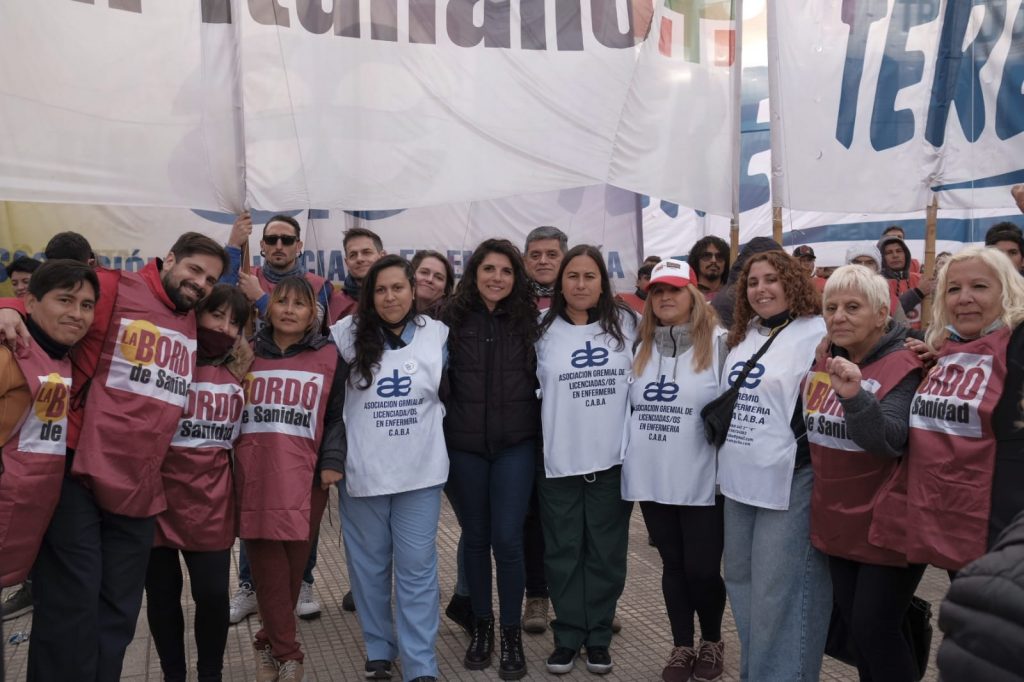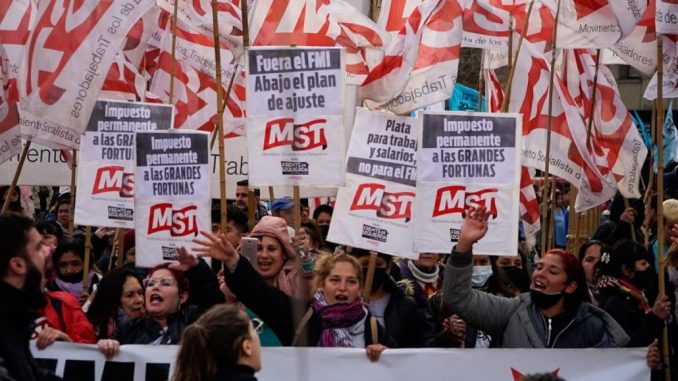
By Nicolás Zuttión
As Wednesday, August 17 drew to a close, the political heart of the country witnessed two marches. As had been announced long ago, the CGT, the CTA and social organizations related to the government mobilized to Congress after a long time. As reflected in the central document led by GCT leaders Daer, Acuña and Moyano, the mobilization did not at any time point to the government’s responsibility for the current economic and social crisis; quite the opposite, it was a march in support of the government. On the opposite political path, the left, the Plenary of Militant Unionism (PSC) and other militant social organizations filled the Plaza de Mayo demanding a national strike and a plan of struggle to defeat the austerity plan of the Front of All and the IMF.
Against the price makers, but in favor of those who let them underline
The call by the CGT, which later received the adherence of the CTA, also ended up counting with the presence of social organizations related to the government. Thus, with the presence of the Evita Movement and La Cámpora, the march of the union bureaucracy ended up becoming, as expected, an official rally. This had been clarified by Yasky when he declared before the event that “all the parties that make up the Front of All have also decided to join the march.”
As was known, the march that started on July 9 and ended at the Congress did not have speakers or the reading of any document. A sample of the lack of coordination and clash of interests among the bureaucrats themselves, as well as the fear due to past experiences. In the CGT, the memory of that lectern that flew reflecting the anger of the bases towards the leaders is still fresh.
The guiding axis of the event ended up being a text that they made public. Price makers, speculators and those who want inflation were denounced, but there was no criticism of the Front of All government.
Once the activity was over, at their central headquarters, the leadership of the CGT gave a press conference. There, they described as positive an action that did not even mention the possibility of a strike when annual inflation is at 90%. The high priests of the union bureaucracy only launched empty phrases. Héctor Daer threw: “It is necessary to find a way out in favor and not the exit intended by the sectors of economic concentration that press for a devaluation process that would impoverish the people and increase the mass of structural poverty.” On his turn, Pablo Moyano also said: “We say to the president to take the measures that he has to take, that we are going to accompany him, that he sit those who mark the prices down at the table.”
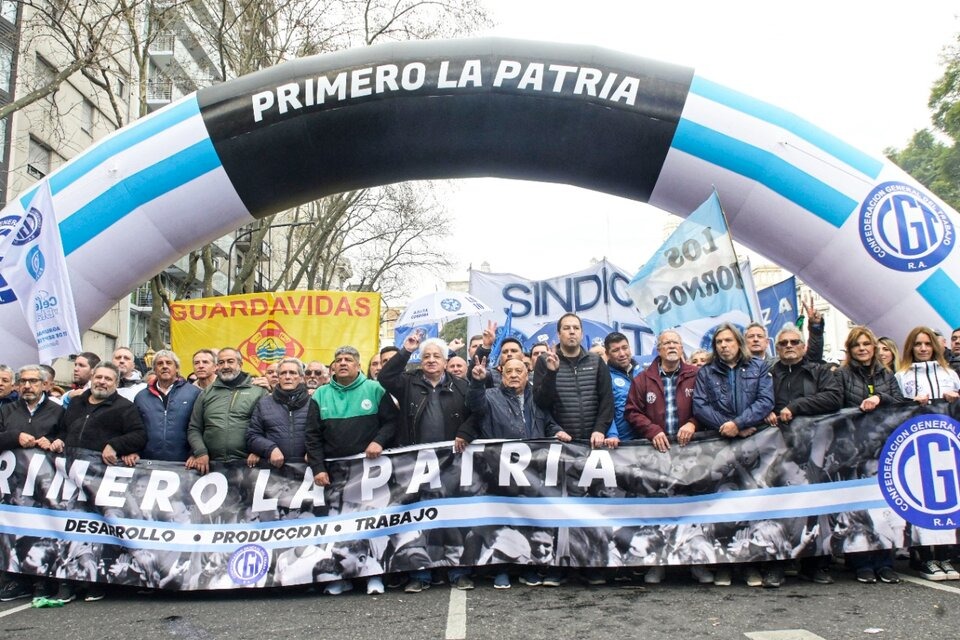
It seems that the bureaucrats are commentators on reality and have not realized that the Front of All, which they are part of, has not taken a single measure in favor of the working class in the almost three years of government that it has been in power. These timid statements that demand “necessary measures” are nothing more than words to dampen the anger that exists in the bases, and even more so as measures like those announced yesterday, an unparalleled tariff increase in electricity, gas and water services, roll out. Meanwhile, far from affecting the concentrated sectors, the government sits down with them to grant more benefits, as was reflected yesterday in Bahillo’s meeting with the agrarian employers.
Also, perverting a real confrontation with the maneuvers of the right, the bureaucratic apparatus as a whole hides under the argument of a supposed “coup” in progress. There resides another of the founding reasons for the “unity” in defense of the current government. The truth is that without independence from the Front of All itself, which works to pave the way for these sectors, as we demonstrated in the previous arguments, it is impossible to confront these sectors. Rather, supporting the government of Alberto Fernández and the agreement with the IMF is the gateway for models such as Together for Change to return to power with a more brusque offensive against workers.
In summary, we could affirm that the action of the CGT and the CTA had the intention of showing firepower in the street, but without a strategy in favor of workers’ interests. The ability to mobilize is only put into play to demonstrate the actions they have within the ruling coalition, in the midst of a fierce austerity plan commanded by Massa. At the same time and as its strongest element, the action had a two-sided character: to function as a straight jacket for the protests that emerge from below and to calm social unrest, something that was evidenced by the participation of hundreds of workers fed up with the current situation. As many of them stated in interviews that were broadcast live, they are determined to fight for wages to stop falling. But far from being a first blow against the austerity, the government and the IMF, this was an action that ensures the continuity of these three elements.
The left filled a plaza that proposed an alternative exit
In an antagonistic way, on the other side, in the Plaza de Mayo as in different places across the country, the left, the Plenary of Militant Unionism and piquetero organizations achieved an important turn out.
In favor of the ongoing struggles, against the austerity plan of the government and the IMF, with the demand for a national strike and a plan of struggle, these combative sectors showed an alternative to be strengthened. Contrary to what was proposed by the union bureaucracy, another union and political option was shown that shows that austerity is not something that the workers have to endure.
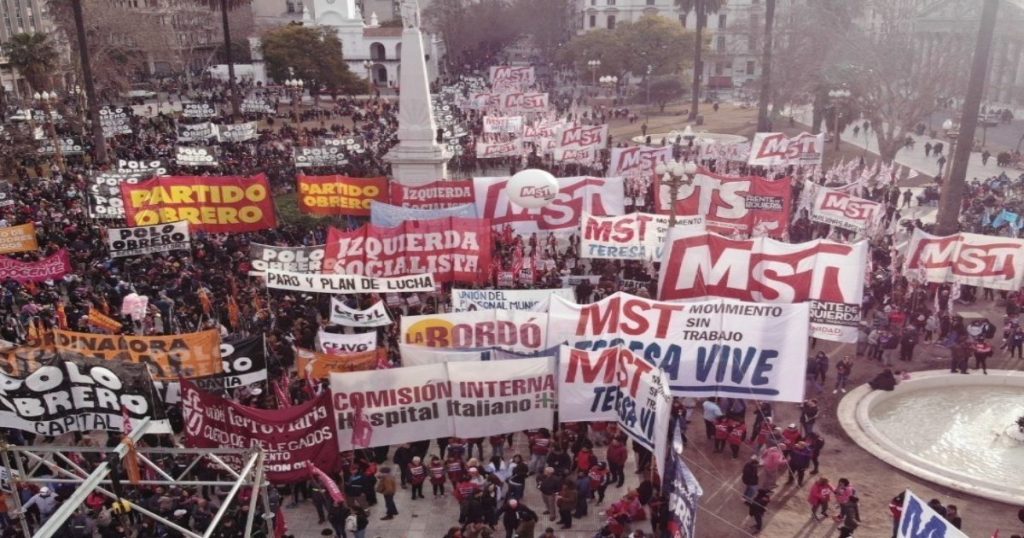
During the rally, in which Cele Fierro of the MST and other leaders of the FITU were present, several leaders of the class based union left took the stage, such as Alejandro Crespo of SUTNA, and leaders of the militant social organizations. There, Guillermo Pacagnini, a leader of the PSC and ANCLA-MST, at the moment of speaking made it clear that “they said that the left does not move the needle. But this plaza shows that it does, and a lot, when there is a pole that summons. (…) There is another way out, a working class and popular plan, adjusting the rich, stopping the payment of the debt, charging taxes to those who have the most, recovering the privatized companies, nationalizing the banks, in short, that workers no longer pay for the crisis, but the corporations and the IMF do so.”
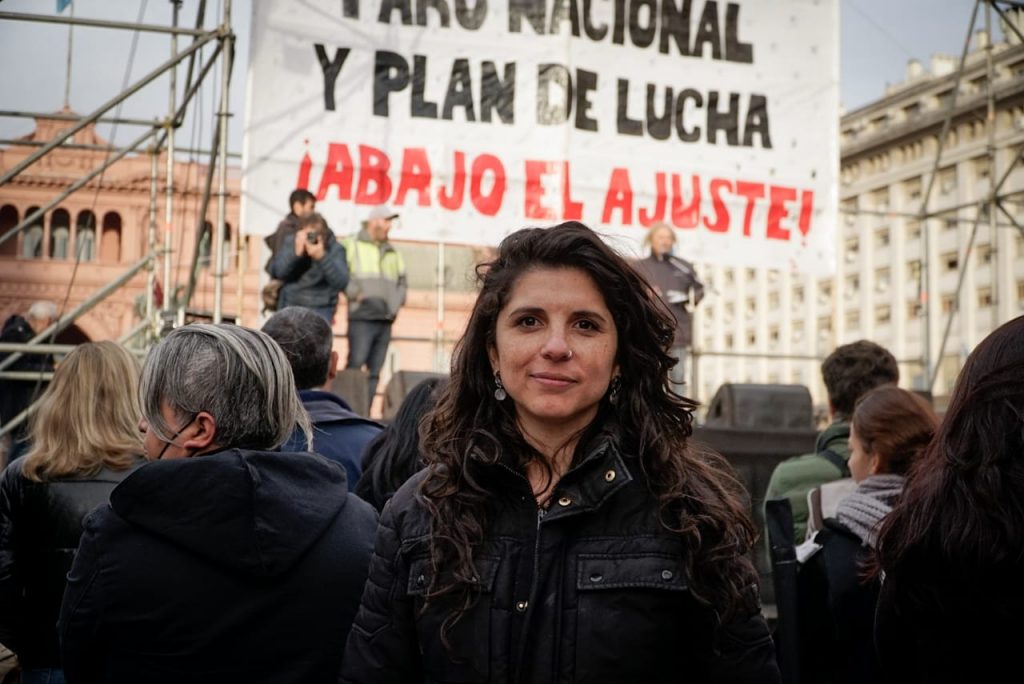
An alternative diametrically opposed to the policy developed in the other march. The raw material to set up a force of the working class exists. In view of this, the FITU has the responsibility of becoming a dynamic tool to bring together these forces. From the MST, our ANCLA union current and in the different spaces where we act as members of the front, we will put all our energies into continuing on calling on all those who are disappointed in this government to fight in the streets for wages and genuine work, for greater social assistance, to annul the tariff hikes, to stop paying the foreign debt scam and to end relations with the IMF. We will put all our energies into growing this left wing, anti-capitalist and socialist alternative with a desire for power, because this capitalist course goes nowhere and it is time for a government of the workers.
